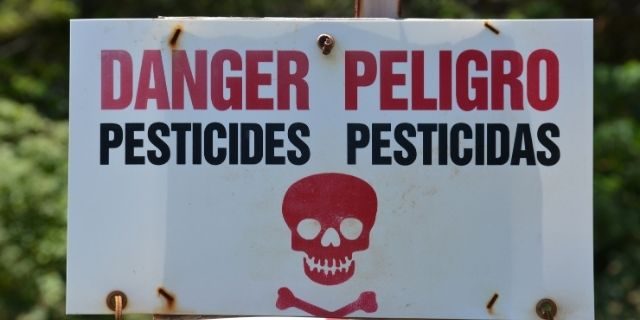16
Mar
Pesticide Exposure, Agricultural Work Associated with Chronic Lung Disease

(Beyond Pesticides, March, 16, 2021) Occupational and environmental exposure to pesticides and other contaminants in the environment increase the risk of developing a lung condition known as idiopathic pulmonary fibrosis (IPF), according to a meta-analysis published in the journal Nature Scientific Reports. IPF is a chronic, degenerative disease with no certain cause or cure. It is estimated to affect roughly 13 women and 20 men in 100,000 adults worldwide annually, with onset averaging age 66. With scientific literature continuously findings new connections between pesticide use and diseases that are all too common in today’s world, advocates say it’s critical for residents and officials at all levels to embrace safer, alternative organic methods of addressing weed and pest issues.
To determine risk factors for IPF, researchers narrowed down relevant research in the available literature from thousands of studies to eight relevant for their meta-analysis. These eight studies looked at IPF risk factors for a number of different populations with different life histories. Overall, roughly 1,000 IPF patients, ranged in ages 50 to 75, were compared to a control group of approximately 2,500 non-IPF patients. The studies covered risk factors based on the environmental contaminant in question, as well as an individual’s occupation. Environmental exposures included metal dust, wood dust, stone and sand dust, textile dust, and pesticides. Occupations included the construction industry, the woodworking industry, the textile industry, and the agricultural sector.
Researchers took data from the eight studies and performed a statistical analysis to better understand associations and risk factors. Pesticide use and agricultural work were found to have the strongest association with IPF. Pesticide exposure increased risk of IPF by 107%, whereas agricultural workers recorded an 88% increased risk. Exposure to metal dust indicated an 83% increased risk, and wood dust 62%. Smoking was found to increase risk by 39%. Scientists determined that careers in woodworking, construction, and textile industry did not raise risk by statistically significant levels in the study.
There are notable limitations to consider within the results, the researchers caution. Study populations were not analyzed based upon specific areas or countries, and thus may not be representative of any one region. It also did not capture racial differences between populations. IPF’s diagnostic process and treatments have also changed since the studies evaluated within the meta-analysis were conducted, although researchers attempted to adjust for confounders in that area. Lastly, some studies included unhealthy individuals within their control group, which could have slightly altered the power of the statistical analysis.
Although further research will need to be conducted, the results indicate cause for significant concern for the lung health of those that are working in the agricultural industry and/or applied toxic pesticides throughout their lives. A considerable body of literature links pesticide use to harmful effects on lung health. Previous reports have found that 78 agricultural pesticides are directly linked to wheezing – potentially the first step towards chronic disease. A 2017 study found pesticide exposure over one’s life to be associated with another degenerative lung disease, Chronic Obstructive Pulmonary Disease (COPD). “[I]t is thought that long-term exposure to pesticides increases mucus secretion and muscle contraction in the lungs, causing breathlessness, cough and wheeze,” the lead researcher of that study told Reuters. A study published last July found pesticide use increased a person’s risk of lung cancer. A comprehensive literature review published last October, focused on lung pathologies in general, found strong correlations between pesticide exposure and various respiratory diseases.
In the context of the Covid-19 pandemic, disease that does significant damage to the body’s pulmonary system, it is more important than ever that we halt the use of pesticides linked to respiratory illness. But while this issue reads like a crisis in the context of a respiratory pandemic, for agricultural workers this risk has been ever-present. Farmworkers are at greatest risk from pesticide-induced disease, and their average life expectancy bears this out. At 56 years, farmworkers are expected to live over 20 fewer years than the average US adult.
Organic agriculture and landscaping provides an off-ramp from our chemically dependent systems of farming and land care. Through organic, we eliminate the most toxic pesticides on the market in favor of working with, rather than against, natural systems. This shifts the focus away from toxic products that damage lungs and health, towards practices that foster greater ecological resilience. For more information on why organic is the right choice, see Beyond Pesticides organic program page. And for more information on the link between pesticides and common diseases, see Beyond Pesticides Pesticide Induced Diseases Database.
All unattributed positions and opinions in this piece are those of Beyond Pesticides.










